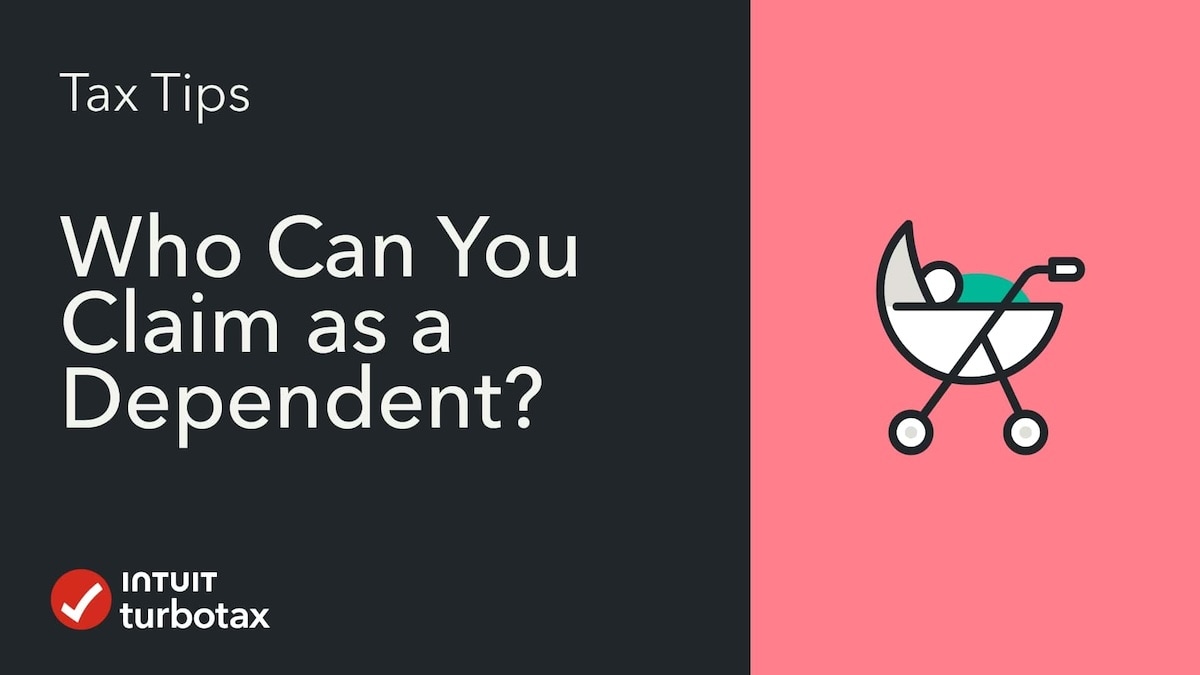Video: Who You Can Claim as a Dependent on Your Tax Return
Valuable tax breaks may be available if you can claim someone as a dependent on your tax return. So who can you claim?
The One Big Beautiful Bill that passed includes permanently extending tax cuts from the Tax Cuts and Jobs Act, including increasing the cap on the amount of state and local or sales tax and property tax (SALT) that you can deduct, makes cuts to energy credits passed under the Inflation Reduction Act, makes changes to taxes on tips and overtime for certain workers, reforms Medicaid, increases the Debt ceiling, and reforms Pell Grants and student loans. Updates to this article are in process. Check our One Big Beautiful Bill article for more information.
Video transcript:
Wondering who qualifies as a dependent on your tax return? We've got the answers on this edition of Tax Tips by TurboTax.
If you have a child that you can claim as a dependent on your 2024 tax return, you could get a tax credit worth up to $2,000. You might also be able to claim a credit of up to $500 for other dependents.
But who can you claim as a dependent? Well, it could be your kid, an uncle, a grandchild, a parent, a nephew, or even a significant other.
The IRS recognizes two types of dependents: Qualifying children and qualifying relatives.
Qualifying children can include your child, a grandchild, a niece or a nephew, or even a brother or sister. To qualify, they must be under 19 years old or under 24 if they are a full time student.
However, they can be any age if they are permanently and totally disabled. In addition, a qualifying child has to live with you for more than half of the tax year.
They also can't provide more than half of their own support for the year. Plus, if the qualifying child is married they can't file a joint tax return unless it's only filed to claim a refund of withheld taxes or estimated tax payments.
Now, a qualifying relative can be someone else in your family that you support, such as a sibling, parent, grandparent, aunt, uncle or an in-law. They don't need to live with you, but you must provide more than half of their support.
Non relatives like a friend, cousin or someone you're just helping out can be a qualifying relative too, but they must live with you for the entire year as a member of your household to be claimed as your dependent.
Also, keep in mind that for the 2024 tax year, you can't claim a qualifying relative as a dependent if their gross income is $5,050 or more for the year.
To recap, dependents can be children, adults, relatives, or even a friend you're helping out.
Ready to claim your dependents and maximize your tax refund? TurboTax will help you claim every deduction for more info. Visit TurboTax.com to help you file your taxes with confidence.

With TurboTax Live Full Service, a local expert matched to your unique situation will do your taxes for you start to finish. Or get unlimited help and advice from tax experts while you do your taxes with TurboTax Live Assisted.
And if you want to file your own taxes, TurboTax will guide you step by step so you can feel confident they'll be done right. No matter which way you file, we guarantee 100% accuracy and your maximum refund.
Get started now by logging into TurboTax and file with confidence.














